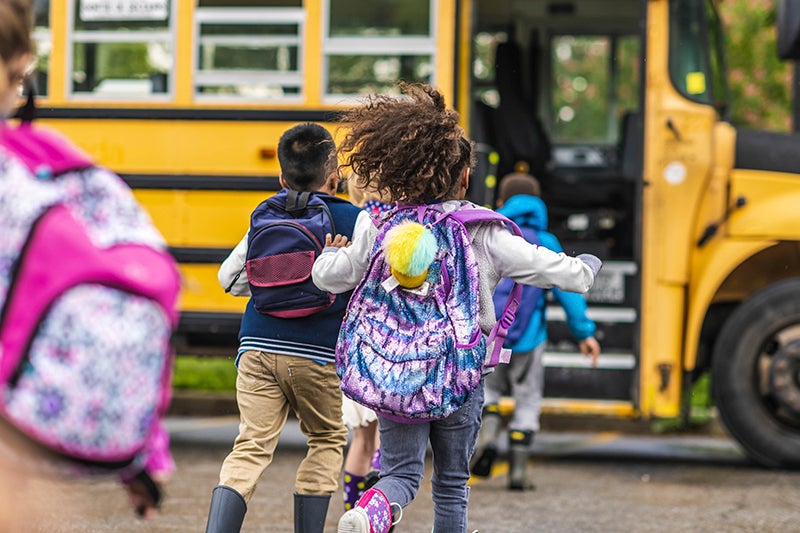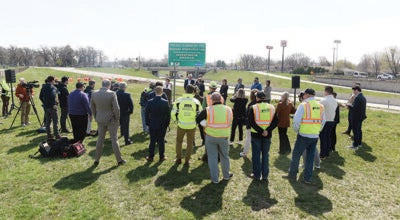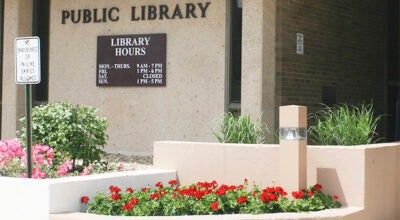Walz’s schools plan stresses in-classroom teaching, flexibility to shift
Published 1:43 pm Thursday, July 30, 2020
|
Getting your Trinity Audio player ready...
|
Districts will decide how their students will start the year
By Elizabeth Shockman and Riham Feshir
Gov. Tim Walz is calling for public school leaders to make staff and student health their top priorities and, essentially, do the best they can to keep kids in school buildings when classes resume this fall.
Walz’s plan emphasizes returning to in-person classroom teaching but leaves it to districts to decide whether their school systems will start the year in buildings, online or some combination based on their local COVID-19 conditions.
State officials will provide analytical guidance to districts during the school year to help superintendents decide if they need to tweak their plans.
The state will also fund masks for all school staff and students as well testing for teachers and staff — including for private schools, which are not bound by the state’s guidance.
“It’s gonna be a first day of school unlike any we’ve seen,” Walz said as he unveiled what he described as a localized, data-driven but “not perfect” plan.
He again implored Minnesotans to wear masks, socially distance and wash their hands to check the spread of the disease. “This plan doesn’t work if community spread accelerates. It will end up impacting our children,” he said. “COVID is not their fault.”
Roadmap driven by county health data
Based on equations released by Walz’s office, schools in counties with about 20 percent of the state’s population would be able to have all students in classrooms if school started today.
Another 38 percent of the state’s population would have elementary students in schools while upper grades had a mix of in-school and distance learning.
Most of the rest of the state, just under 40 percent, would have all students using hybrid learning.
Health officials will generate a two-week infection rate that districts are expected to use to assess the risk of COVID in schools. No counties currently have COVID-19 case rates that would require all students to do remote learning. Rates, however, can change as the start of the school year approaches.
“This guidance is not drawn in stone,” Walz said, noting that county boundaries and school district boundaries aren’t the same and that the county-level calculations don’t mean a decision has been made.
“We just want the health data to be the starting point for the decision-making.”
Walz’s plan requires school districts and charter schools to give families the option to choose distance learning for their student no matter their district’s plans. Officials expect that districts will inform families of their plans at least a week in advance.
Walz, a former Mankato public school teacher, said he’s been talking to teachers, including a former colleague, about how they feel about returning to school buildings. The governor said his friend conceded he was nervous for staff and kids but that he wanted to get back in the classroom and teach.
“Their default position is to be there,” Walz said of teachers. “Our job is to put them in a safe space.”
Deb Henton, executive director of the Minnesota Association of School Administrators, said school leaders wanted the reopening plan to provide flexibility.
“I do believe that our educators in the state are going to be happy with the decision,” she said. “Some school districts are going to have to be in the full-on distance learning mode that they may not have wanted to be in, but they understand.”
‘Covid is not going away’
Health officials said they’d consulted with national and international experts about how to handle education as the coronavirus continues to spread.
There will be outbreaks in the schools as at least some kids and teachers go back into the classroom, Jan Malcolm, the state’s health commissioner, said Thursday.
”Unfortunately — and boy we all wish this was different — COVID-19 is not going away anytime soon. It is still very much with us,” she said. “We are still in the growth phase of this pandemic, but we also can’t stop attending to the learning needs of Minnesota kids.”
Malcolm said state officials would be ready to help and try to control any outbreaks and make recommendations about when to limit or eliminate face-to-face teaching.
Districts are also being instructed by the state to offer online instruction to any families that prefer it.
Plans already in motion
Minnesota districts have been making their fall plans for months already, and many have been communicating their decisions and plans to families.
Minneapolis Public Schools has already announced they will likely start the school year remotely.
Neither scientists nor officials fully understand the public health implications of reopening schools for in-person learning during the coronavirus pandemic. While some children have become seriously ill with COVID-19, most tend to have milder symptoms than adults. And researchers don’t yet have a good handle on the long-term impacts of getting infected with the virus.
Minnesota public health officials have, however, been keeping track of COVID-19 cases in those child care programs that have been open since March.
Close to 1 percent of Minnesota’s licensed child care programs have had at least one confirmed COVID-19 case.
The majority of cases in those programs have been among staff, and state health officials say there’s not a lot of evidence so far that those staffers got the virus from other employees or from kids in the center.
Fourth option?
The Wadena-Deer Creek School District has been planning for all three scenarios — in school teaching, online and hybrid — but leaders there have added a fourth option that would bring K-6 students back full time, while keeping middle and high school students in a hybrid mix of on campus two days a week and distance learning the rest of the week.
Wadena County has 23 positive cases confirmed for COVID-19, according to the Health Department.
School officials asked families to let them know if they’d prefer full-time remote learning. Elementary school principal Louis Rutten said just three or four families expressed interest. The elementary student population is 470 students.
“By and large I think most people would like to have in-person,” he said. “We’re going to try to get that to happen and with their help I’m sure we’ll be able to keep it as safe as we can.”
See the state’s full plan here.
MPR News reporters Brian Bakst and Tim Nelson contributed to this report.






